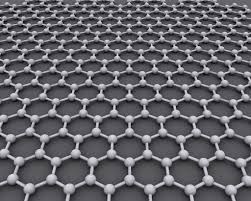Could a new approach to thermal conductivity revolutionise geothermal?
Could graphene (carbon) cables revolutionise how we derive heat from geothermal wells and distribute heat? This at least believes Manoj Bhargava, an Indian billionaire investing into research into the development of graphene cables.
 Geothermal energy utilisation for power generation and direct use has always faced some heavy up-front costs and risks. One of the most important risk is the exploration risk, namely to find sufficient temperatures but also to find sufficient steam/ water to transport the heat to the surface. There the heat in the form of steam can turn a turbine and generate electricity, or fluids derived can heat a secondary fluid then also used in the form of steam to generate electricity. In direct use application fluids can be used either directly or also be used for heat exchanges for a wide variety of applications.
Geothermal energy utilisation for power generation and direct use has always faced some heavy up-front costs and risks. One of the most important risk is the exploration risk, namely to find sufficient temperatures but also to find sufficient steam/ water to transport the heat to the surface. There the heat in the form of steam can turn a turbine and generate electricity, or fluids derived can heat a secondary fluid then also used in the form of steam to generate electricity. In direct use application fluids can be used either directly or also be used for heat exchanges for a wide variety of applications.
All have in common that water is the key carrier for the energy to the surface. This requires wells to be drilled both deep and with wide diameters to derive sufficient steam or fluids to the surface. The whole concept of reservoir engineering, determining the water flows etc. is complicated not only to the outsiders, but also for those people involved in the geothermal industry.
There have been several research activities aimed at figuring out ways to use different ways to utilise and derive heat from wells, among others with carbon dioxide as element, but now a new possibility is mentioned. Quite frankly, I am having problems putting my head around this and I am not sure how realistic this all is, but it does sound interesting and at least could open discussions on a more efficient way to tap into the Earth’s heat.
Manoj Bhargava, an Indian billionaire, who made most of his money with an energy drink, is investing heavily in all kinds of different research mostly focused on energy. A recent article in National Geographic describes his activities and background.
In the article, he describes his approach to tapping into geothermal. “Rather than using steam—mixed with chemicals—to bring the heat to the surface, he would instead pull it up with a graphene cord. He notes graphene, stronger than steel, is an incredible conductor of heat.”
So lets look at graphene. “Graphene is an allotrope of carbon in the form of a two-dimensional, atomic-scale, hexagonal lattice in which one atom forms each vertex. It is the basic structural element of other allotropes, including graphite, charcoal, carbon nanotubes and fullerenes.”, so described by the British English Dictionary & Thesaurus and the Oxford Advanced Learner’s Dictionary”.
Essentially this form of carbon provides great thermal conductivity, the “measure of the ability of a material to allow the flow ofheat from its warmer surface through the material to its colder surface, determined as the heat energy transferred per unit of time and per unit of surface area divided by the temperature gradient, which is the temperature difference divided by the distance …”, so thefreedictionary.com.
Without understanding this completely, it essentially seems to allow to “transport” heat to the surface. Question simply is how efficient it is and if it is efficient enough to transport high heat to the surface to be used for power generation. If it does it is indeed a rather interesting research.
“…Once you bring [heat] up, you don’t change any of the infrastructure,” he says, explaining that utilities could simply distribute it instead of coal, oil, or natural gas. These graphene cables could also transport the heat over long distances, which in itself would save a lot of infrastructure cost as well.
According to National Geographics, he is working with a “graphene research center in Singapore to develop a cable and plans to have pictures available in later year.”
SOURCE-www.thinkgeoenergy.com